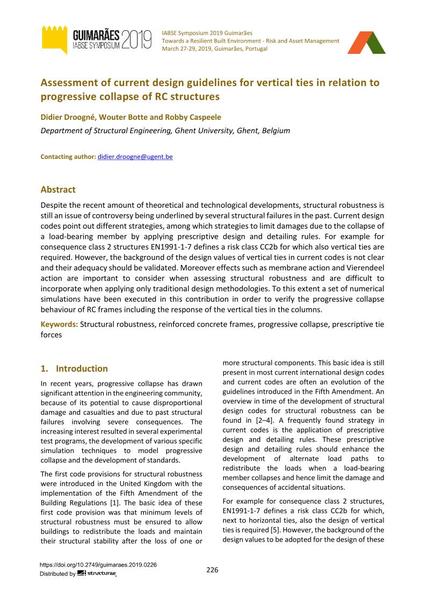Assessment of current design guidelines for vertical ties in relation to progressive collapse of RC structures

|
|
|||||||||||
Détails bibliographiques
| Auteur(s): |
Didier Droogné
(Department of Structural Engineering, Ghent University, Ghent, Belgium)
Wouter Botte Robby Caspeele |
||||
|---|---|---|---|---|---|
| Médium: | papier de conférence | ||||
| Langue(s): | anglais | ||||
| Conférence: | IABSE Symposium: Towards a Resilient Built Environment Risk and Asset Management, Guimarães, Portugal, 27-29 March 2019 | ||||
| Publié dans: | IABSE Symposium Guimarães 2019 | ||||
|
|||||
| Page(s): | 226-235 | ||||
| Nombre total de pages (du PDF): | 10 | ||||
| DOI: | 10.2749/guimaraes.2019.0226 | ||||
| Abstrait: |
Despite the recent amount of theoretical and technological developments, structural robustness is still an issue of controversy being underlined by several structural failures in the past. Current design codes point out different strategies, among which strategies to limit damages due to the collapse of a load-bearing member by applying prescriptive design and detailing rules. For example for consequence class 2 structures EN1991-1-7 defines a risk class CC2b for which also vertical ties are required. However, the background of the design values of vertical ties in current codes is not clear and their adequacy should be validated. Moreover effects such as membrane action and Vierendeel action are important to consider when assessing structural robustness and are difficult to incorporate when applying only traditional design methodologies. To this extent a set of numerical simulations have been executed in this contribution in order to verify the progressive collapse behaviour of RC frames including the response of the vertical ties in the columns. |
||||
